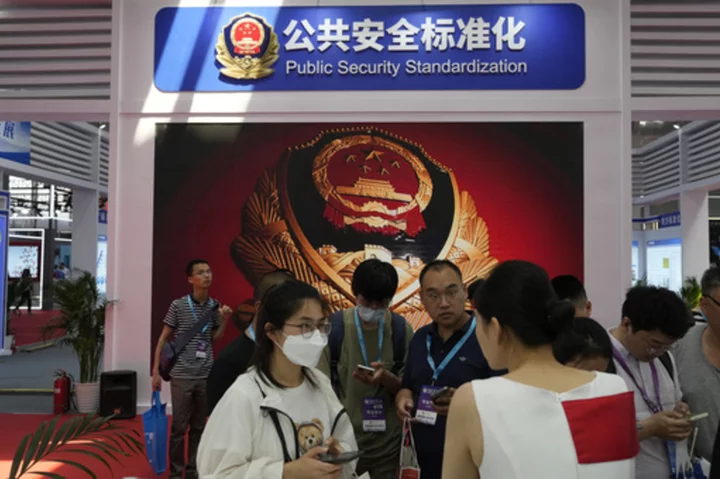WASHINGTON (AP) — America's surprisingly resilient job market may have delivered yet another month of solid hiring and pay gains in May, if economists' forecasts prove to be correct. Still, some signs of cooling could emerge in the government report being released Friday.
Analysts have estimated that hiring slowed to a still-healthy pace of 190,000 added jobs last month, according to a survey by the data provider FactSet. That would mark a decline from the robust 253,000 jobs that were gained in April and would fall below the average for the previous three months of about 220,000. The unemployment rate is projected to rise slightly to 3.5% from a five-decade low of 3.4%.
Companies have steadily slowed hiring since January, when the three-month average pace of gains was an unusually strong 330,000.
Federal Reserve officials would welcome a more modest rate of job growth. The central bank has raised its benchmark interest rate 10 times in 14 months in an aggressive drive to conquer high inflation. Fed officials have said they think strong hiring can often fuel inflation if companies feel compelled to raise pay to attract and keep workers. These companies typically pass on their higher labor costs to their customers by raising prices.
A slowdown in job growth and pay raises could help the Fed reach its 2% inflation target. Though inflation has dropped steadily from its peak of 9.1% a year ago, it remained elevated in April at 4.9%, measured year over year.
Top Fed officials have signaled that they expect to forgo a rate increase at their June 13-14 meeting. Doing so would afford them time to assess how their previous rate hikes have affected the inflation pressures underlying the economy. Higher rates typically take time to affect growth and hiring. The Fed wants to avoid raising its key rate to the point where it would slow borrowing and spending so much as to cause a deep recession.
In remarks this week, several Fed officials pointed to Friday's jobs report — along with the next government report on inflation, to be released June 13 — as important factors in their decision-making. It's possible that a much stronger-than-expected May jobs report could cause the Fed's policymakers to consider imposing yet another rate hike this month instead of pausing.
Slower hiring could suggest that the job market is moving toward a more sustainable balance after two years of gangbusters gains that followed the economy's explosive rebound from the 2020 pandemic recession.
The U.S. economy as a whole has been gradually weakening. It grew at a lackluster 1.3% annual rate from January through March, after 2.6% annual growth from October through December and 3.2% from July through September.
Some signs have emerged that demand for workers, too, is easing just as more Americans are coming off the sidelines and looking for jobs. The low unemployment rate and rising pay have helped persuade more than 2 million people to take jobs or begin looking for work in just the past six months.
“We are seeing some calming down in terms of the jobs market, even if it remains pretty strong overall,” said Sarah House, an economist at Wells Fargo.
The number of people who are quitting their jobs — a sign of confidence in the employment market — has dropped back to near pre-pandemic levels. Companies have also shed temporary employees for the past three months, evidence that labor demand has begun to ebb.
The Federal Reserve's so-called Beige Book, a collection of anecdotal reports mostly from businesses across the country, reported Wednesday that the pace of hiring gains in April and May had “cooled some” compared with previous reports. Many companies reported that they were fully staffed.
At the same time, despite some high-profile job cuts by financial and high-technology companies, the pace of layoffs remains unusually low. The number of people seeking first-time unemployment benefits, a proxy for layoffs, barely rose from a low level last week.
Many employers are still engaged in so-called “catch-up hiring,” particularly in such sectors as restaurants, hotels and entertainment venues. Though customer demand in these industries has spiked, the number of employed workers remains below pre-pandemic levels.
Consumers, who drive roughly two-thirds of economic activity, are still mostly spending at a solid pace, despite higher prices and borrowing rates. Their spending jumped 0.8% in April, the fastest monthly pace since January, as Americans flocked to airports, restaurants and concert halls, among other places.









